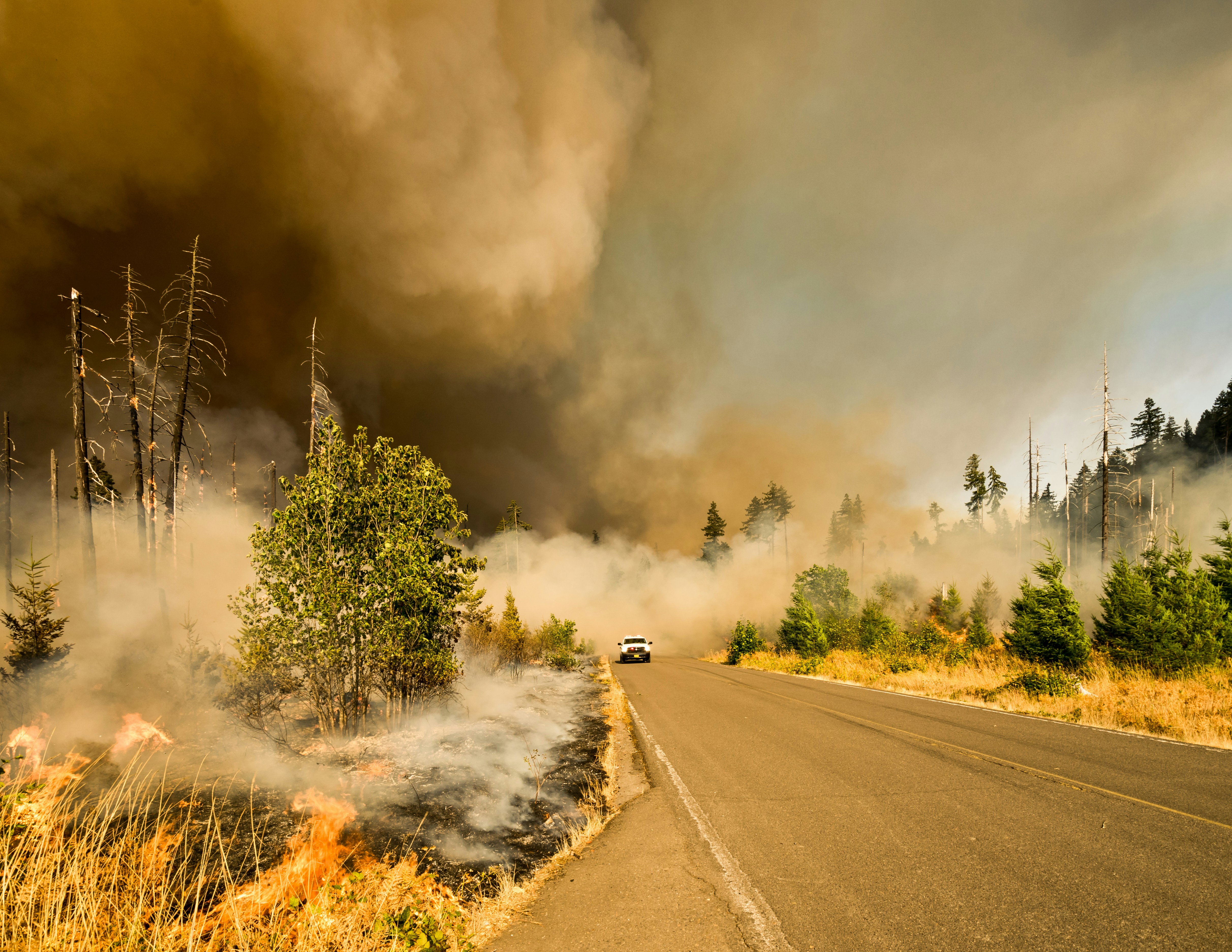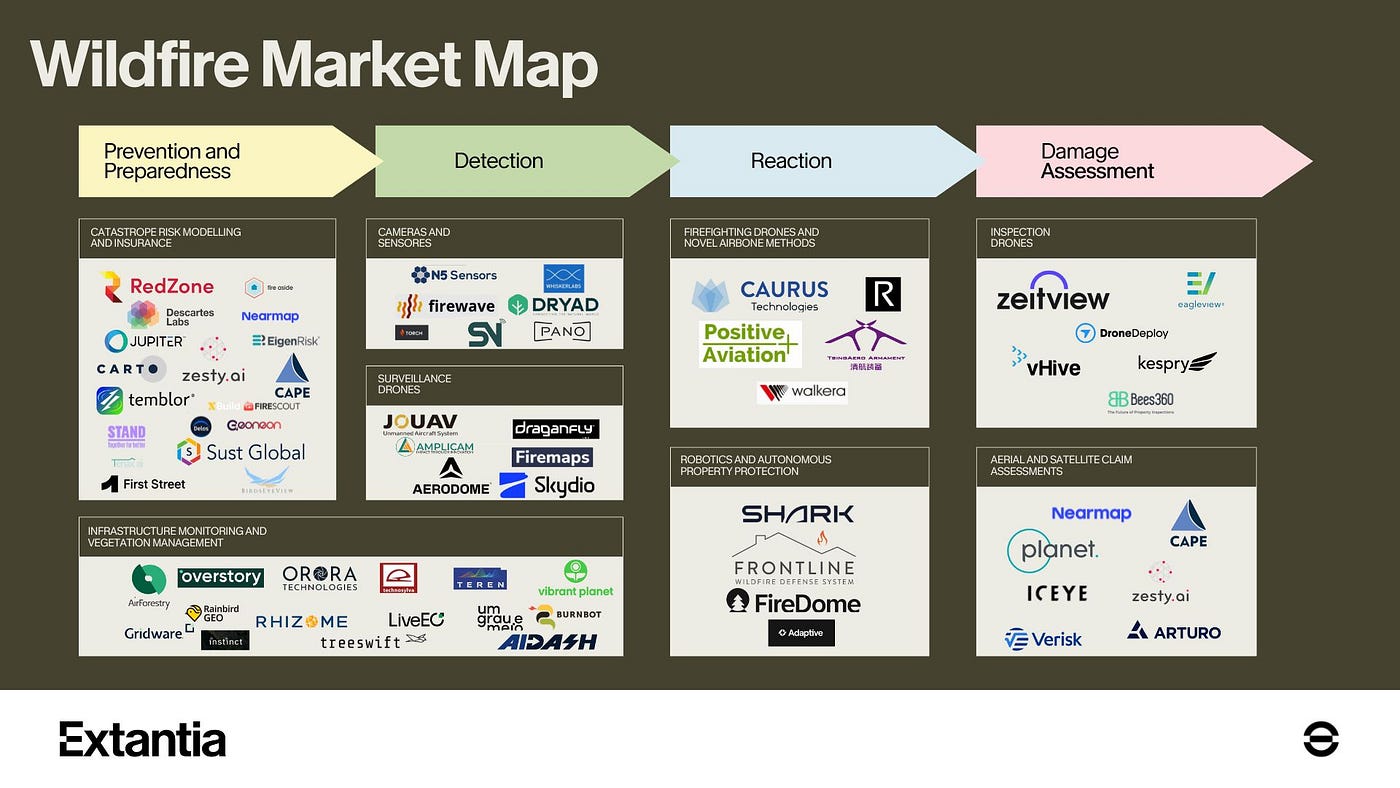
Summer Is Burning: Reimagining Wildfire Resilience

Wildfires have moved from niche headlines to the top of the news cycle. But despite the growing attention, the world isn’t actually burning more. Research by Our World in Data shows that the total land burned each year has slightly declined, and fire-related CO₂ emissions have actually stayed fairly flat.
What has changed is the cost and the intensity of each fire. Estimates from the January 2025 LA fires suggest damages of up to $250 billion, making it one of the most expensive disasters ever recorded.
Why Today’s Wildfires Are So Destructive
Two main forces are driving this rise in damage.
First, the effects of climate change are making fires more intense. Temperatures in the Western U.S. have increased by roughly 1.4°C since the beginning of climate change, drying out vegetation and extending the fire season by more than two months.
Second, decades of fire suppression policies have left forests overgrown, dense, and full of dry, flammable material. Especially in the Western U.S., this heavy fuel load — combined with aging power lines — is now responsible for a vast majority of fire ignitions.
When Risk Becomes Uninsurable
The financial consequences go far beyond the fire itself. Back-to-back fire seasons in California (2017 and 2018) erased over three decades of insurer profits, leaving the sector more than $10 billion in the red. Governments already spend more than $10 billion annually on fire suppression. Across the board, there’s a growing need for technology that can turn uninsurable risk into manageable resilience.
Solutions Overview: A Full Technology Stack Is Emerging
To better understand this fast-growing landscape, we developed a wildfire market map that breaks the space into four core categories of innovation: prevention and preparedness, detection and monitoring, reaction and firefighting, and damage assessment and insurance.
It all begins with prevention and preparedness — solutions designed to reduce the chance of ignition and limit the potential impact of a fire. This includes tools like fuel-load mapping, predictive modelling, and proactive vegetation management. When fires do break out, detection and monitoring technologies step in, offering early warnings through satellites, ground sensors, and AI-powered systems that help decision-makers act fast. Once a fire is underway, reaction and firefighting solutions come into play — from autonomous suppression systems to drones and advanced retardants that help slow the spread. After the flames are out, damage assessment and insurance tools take over, enabling faster claims, clearer impact analysis, and better modelling of future risks.
Rather than treating wildfire as an inevitable disaster, this emerging stack of technologies offers a path toward prevention, resilience, and long-term risk reduction.

The common denominator in these segments is the shift from reaction to prevention. Even modest improvements in time-to-attack or fuel-load reduction translate into out-sized drops in expected loss, a language insurers, utilities and regulators all understand.
To succeed in wildfire resilience, technologies must do more than detect or suppress fires — they must deliver measurable impact to those who carry the financial risk. We see four primary customer groups emerging across this space: insurers, utilities, governments, and landowners. Each faces growing exposure, and each has a unique incentive to act.
Among them, insurers and utilities stand out. After two devastating California fire seasons in 2017 and 2018, insurers lost more than twice the underwriting profits they had earned in the previous 30 years. Utilities, too, are under pressure — liable for fires sparked by aging power lines, with some verdicts in the billions. These two groups urgently need solutions that reduce risk at the source, not just after ignition. Governments, stretched by the rising costs of suppression and recovery, and landowners, tasked with managing increasingly flammable terrain, are also turning to technology in search of scalable, preventative solutions. For all of them, the focus is shifting from reaction to resilience — from bearing risk to actively reducing it.
Turning risk into resilience
At Extantia, we believe that wildfire risk is solvable with technology. New solutions — combining sensors, AI, earth observation, and novel insurance models — can turn what’s now seen as a growing liability into a manageable, even insurable, risk. Prevention, once an underfunded common good, is starting to attract serious investment — because every dollar spent before ignition may save ten after the fire starts.
If you’re working on a solution to address these challenges, we’d love to hear from you! Please reach out.
If you’re looking for a job with actual impact, both for your career as well as for the planet have a look at the job openings within our eco system.


